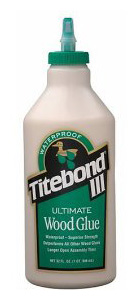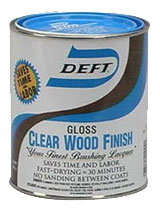HOW TO MAKE A SKATEBOARD DECK
I have an article covering the basics of skateboard construction but I felt the topic should be covered in depth, explaining how to make a skateboard deck.
Making a the deck yourself is really not that hard. Each individual task that makes up its construction is a pretty easy one. It's the sum of these tasks which make skateboard construction daunting for most.
Because there are quite a bit of man hours that go into each deck and if you make a mistake anywhere along the way, it will build on it's self and can ruin your project.
SKATEBOARD VENEER
Let's start with veneer. Skateboard veneer can be broken down into three categories of plys.
Face plys, sanded or unsanded core plys and cross band plys which are generally unsanded. The way that you orient these different layers changes a board's strength, weight and feel.
A common method of arranging the plys or layers would be...
- Face
- Core layer
- Cross band
- Core layer
- Cross band
- Core layer
The thickness of the veneer varies as well. Often, 1/17th of an inch (.058 / 1.47mm) for the faces and core layers and the cross bands are generally thinner at 1/20th of an inch (.050 / 1.27mm).

Depending on the results you want to achieve, veneer is also available in other thicknesses...
- Face
- Core layer
- Cross band
- Core layer
- Cross band
- Core layer
SKATEBOARD GLUE
You can use a glue made specifically for the skateboarding industry or a quality woodworking glue like Titebond III or a similar waterproof-when-dry glue.
It's best to apply the glue with a paint roller. Preferably one with a short nap that is no wider than 4" in width.
The amount of glue that you apply is critical and may vary with each type of glue. I usually use about 3 ounces per veneer ply if the roller is dry and 2 ounces per veneer ply if the roller is already wet with glue. You also need to have an even coat which has not dried in any spot during the glue up process.
The number one problem during skateboard construction is delamination, which can usually be traced back to an improper glue up. So work quick and make sure you apply enough glue to your veneer.

SKATEBOARD MOLDS
The veneer is then placed into a skateboard mold which with the help of a press, will force the veneer into the desired shape. There are a variety of these from foam, wood, aluminum and concrete.
A lot of factors go into choosing the right mold. Such as what type of press will you be using, how many decks do you plan on making, how much space do you have and how much do you have in your budget.
DRILLING THE HOLES
You want to drill your holes for the truck mounting hardware with a drill press. You can also use a standard drill, but you must make the holes as perpendicular to the deck as possible.
To locate the holes, you can use an old deck for a template or you can measure to find your true center of your deck, determine your wheelbase, then go from there.
The truck holes are 1 5/8" apart and 2 1/8" from front to back. Use a 3/16" drill bit to drill the holes.
For a truck hole mounting template click here.
SKATEBOARD PRESS
Your choice of press is determined by your mold.Regardless of mold, you will want to cold press your veneer (without heat at room temperature).
Many factors go into how much pressure you'll need but 175 psi or 25 tons is a good place to start. Which is why a 5 ton press requires the veneer to be pressed for a longer period of time.
The formula you use to determine the proper tonnage is as follows. Take your total number of sq. inches, a sheet of 9.5" by 34" veneer is 323 (9.5 times 34). Multiply that number by your psi (175), which equals 56,525. Divide this number by 2000 (pounds in a ton) to arrive at about 28 tons.
With the proper tonnage, some glues can set up as quickly as 10 minutes or less. If you are using an actual skateboard glue such as Multibond Sk8 or PC-2365 and correct tonnage, you can remove your decks within 2 hours (be sure to check with the manufacture of the glue to make sure).
If you are using less than the required tonnage, say a 5 ton press, you would just leave your veneer in the skateboard press for a longer period of time. I recommend a full 24 hours.
Once your skateboard deck has been removed from the mold, let it cure for an additional 24 hours before you do any more work on it. This allows both the glue and wood to completely dry.

ROUNDING AND SANDING THE SKATEBOARD
The way a skateboard deck gets it's radiused or rounded edges can be achieved by using a router or a lot of sanding. I like to use a palm router or "mini" router as it is less cumbersome and easier to maneuver around the deck.The amount of radius is determined by personal preference, although 1/8" to 3/16" radius is about what you would find on a pro deck.
Once you've gotten the edges taken care of, you'll want to sand your skateboard deck. It is helpful but not necessary to use an orbital sander.Start with 80 or 100 grit sandpaper and progressively work your way down to about 220 grit sandpaper which should leave the deck very smooth

SHAPING THE SKATEBOARD
Shaping the deck is often accomplished by using another deck as a template. Trace the deck onto your uncut blank so you can see where to cut. Use a band saw or jig saw to cut out the deck.
You can also take common skateboard measurements and determine where you should cut.
For common skateboard measurments click here.
SEALING THE SKATEBOARD
Once the deck has been sanded smooth, use a tack cloth to remove the saw dust left behind. A tack cloth is essentially cheesecloth coated in a particular kind of wax. It works very well and I highly suggest using one.
Now that your deck is smooth and clear of debris, you're ready to seal it.

I use Deft Lacquer. There are many different products you could use here, but I swear by Deft. No one has ever paid me to advertise their product on my site and this lacquer is no different. I just feel it's that good.
Unfortunately, it smells horrific. Which means that you must use it in a very well ventilated environment (outside, a good idea for all sealants).
GRAPHICS
After you've applied the sealer, you can move on to the graphics.
Stencil, spray paint, free hand or screen print... it's up to you. Just make sure that you use a paint with the same base as your sealer and final coat. What I mean by that is, if your sealer is water based, use a water based paint. If your sealer is solvent based, use a solvent based paint.
Some sources say to use the same brand of paint. Which doesn't hurt, but I haven't found it necessary.
FINAL COAT
Once you have finished your graphics and you've left them to dry overnight or longer, take your tack cloth and wipe down the deck.

Using a clear coat, (I use my lacquer sealer) cover the deck and let it dry. Depending on the product, you may want to give your skateboard several more coats of finish (check with the manufacture).
That should be it, you have a finished skateboard deck that you made yourself from scratch. Now it's time to grip it and destroy what you've worked so hard to make... it's a cruel world sometimes.